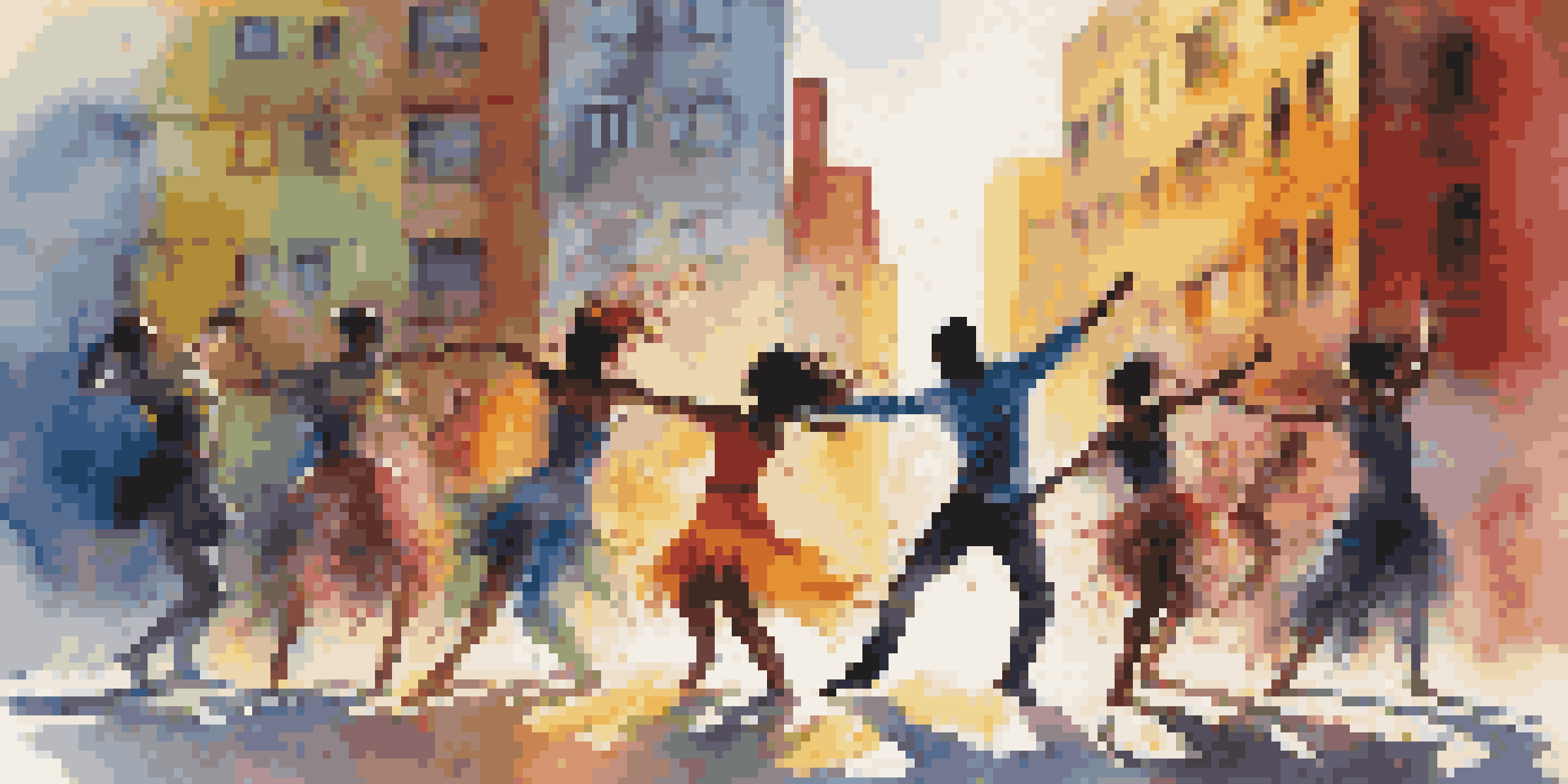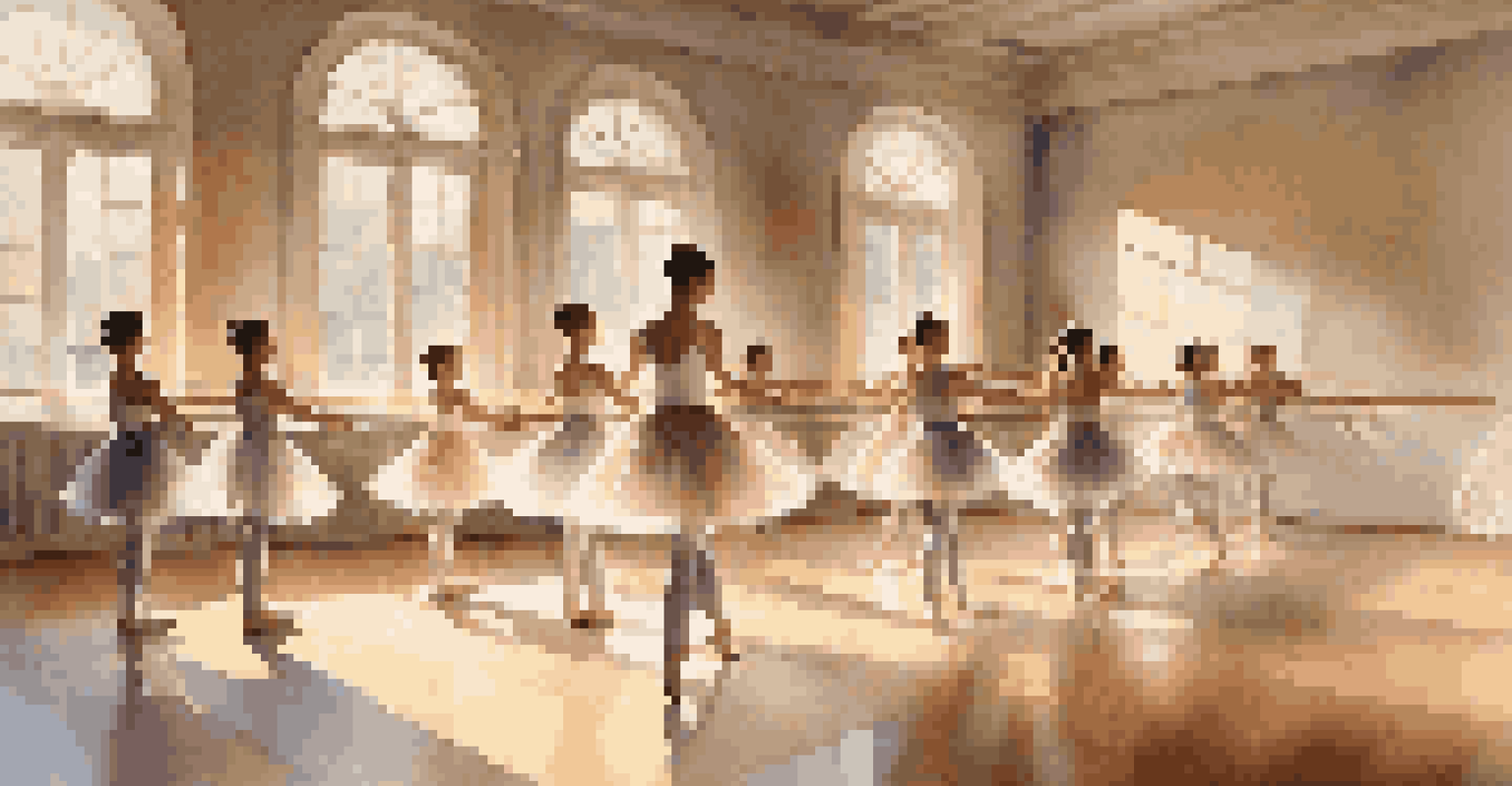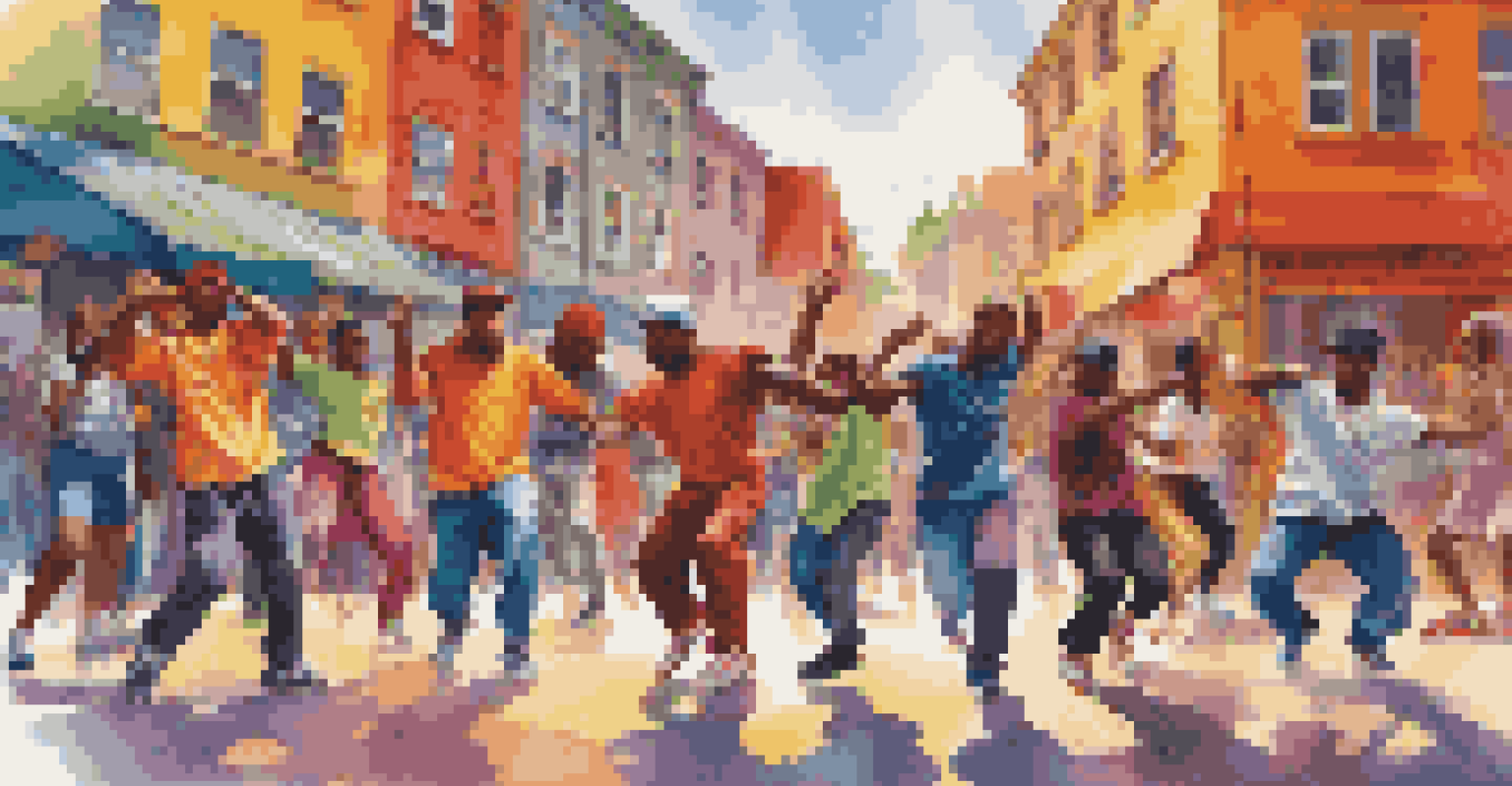The Role of Music in Enhancing Dance Communication

Understanding Dance Communication Through Music
Dance is a powerful form of communication that transcends words. At its core, it conveys emotions, stories, and cultural expressions. When music accompanies dance, it amplifies these messages, creating a richer narrative that resonates with audiences.
Dance is the hidden language of the soul.
For instance, a joyful dance set to an upbeat melody can evoke feelings of happiness, while a slow, melancholic tune can capture sorrow and reflection. The rhythm and tempo of music guide the dancer's movements, helping to shape the mood and tone of the performance.
Ultimately, music acts as a universal language that enhances the dancer's ability to connect with the audience, making the experience more immersive and impactful.
The Emotional Connection Between Music and Dance
Music and dance share a unique bond that taps into our emotions. This connection allows dancers to express feelings that might be difficult to articulate verbally. When a dancer moves to music, they embody the emotion of the piece, creating a visceral experience for both themselves and their audience.

Take, for example, a contemporary dance piece that interprets a heartbreak song. The dancer's movements become a physical manifestation of the lyrics, drawing the audience into the emotional landscape of the music. This synergy not only captivates viewers but also fosters empathy and understanding.
Music Amplifies Dance Communication
The combination of music and dance conveys emotions and stories, creating a more immersive experience for audiences.
Through this emotional connection, music serves as a catalyst for deeper expression in dance, allowing performers to convey complex feelings and narratives.
Rhythm as a Foundation for Dance Movements
Rhythm is the heartbeat of both music and dance. It provides the structure that dancers rely on to time their movements and create flow in their performances. When dancers synchronize their movements with the rhythm of the music, it enhances the visual appeal and creates a mesmerizing experience.
Music can change the world because it can change people.
Consider a group of dancers performing a hip-hop routine; the precision of their steps in time with the beat creates a dynamic and energetic performance. The interplay of rhythm and movement engages the audience, making them feel the energy and excitement.
By understanding and embodying the rhythm of the music, dancers can elevate their performances, making them more captivating and enjoyable.
Cultural Significance of Music in Dance Expression
Music plays a vital role in reflecting cultural identities through dance. Different styles of music often align with specific dance forms, showcasing traditions, histories, and values. For instance, traditional folk dances are typically accompanied by regional music that tells the story of a community's heritage.
When dancers perform to culturally specific music, they not only honor their roots but also educate others about their traditions. This cultural exchange fosters appreciation and understanding among diverse audiences.
Rhythm Guides Dance Movements
Rhythm serves as the foundation for dance, helping performers synchronize their movements to enhance visual appeal.
In this way, music becomes a bridge that connects dancers to their cultural narratives, enriching the overall dance experience.
The Role of Improvisation in Dance and Music
Improvisation is an exciting aspect of both music and dance that encourages spontaneity and creativity. When dancers respond to live music, they can explore new movements and expressions in real-time, creating a unique performance that feels fresh and engaging.
For example, in a jazz dance session, a dancer might interpret a musician's improvisational solos, allowing for a dynamic interplay that surprises both the performer and the audience. This unpredictability adds an element of excitement and authenticity to the performance.
Moreover, improvisation fosters a sense of collaboration between dancers and musicians, enhancing the overall experience and encouraging innovative artistic expression.
Music as a Tool for Dance Training and Development
In dance training, music serves as an essential tool for development. It helps students internalize rhythm, improve timing, and enhance their overall movement quality. By practicing with music, dancers learn to synchronize their movements, which is crucial for group performances.
Consider a ballet class where students practice their routines to classical music. The tempo of the music guides their movements, helping them develop grace and precision. This connection between music and dance training can significantly improve a dancer's technique and confidence.
Cultural Identity Through Music
Music reflects cultural identities in dance, showcasing traditions and fostering understanding among diverse audiences.
Furthermore, incorporating various musical genres into training can expose dancers to different styles and rhythms, fostering versatility and creativity.
The Influence of Music on Audience Perception of Dance
The music accompanying a dance performance significantly influences how the audience perceives and interprets the dance. It sets the mood and can dramatically alter the viewer's emotional response. For instance, a lively tango piece might evoke excitement, while a soft piano melody may inspire introspection.
When audiences connect emotionally with the music, they are more likely to engage with the dance itself. This connection can transform a performance into a memorable experience that lingers long after the curtain falls.

Thus, the choice of music is a crucial element in dance performances, as it shapes the audience's perceptions and reactions.